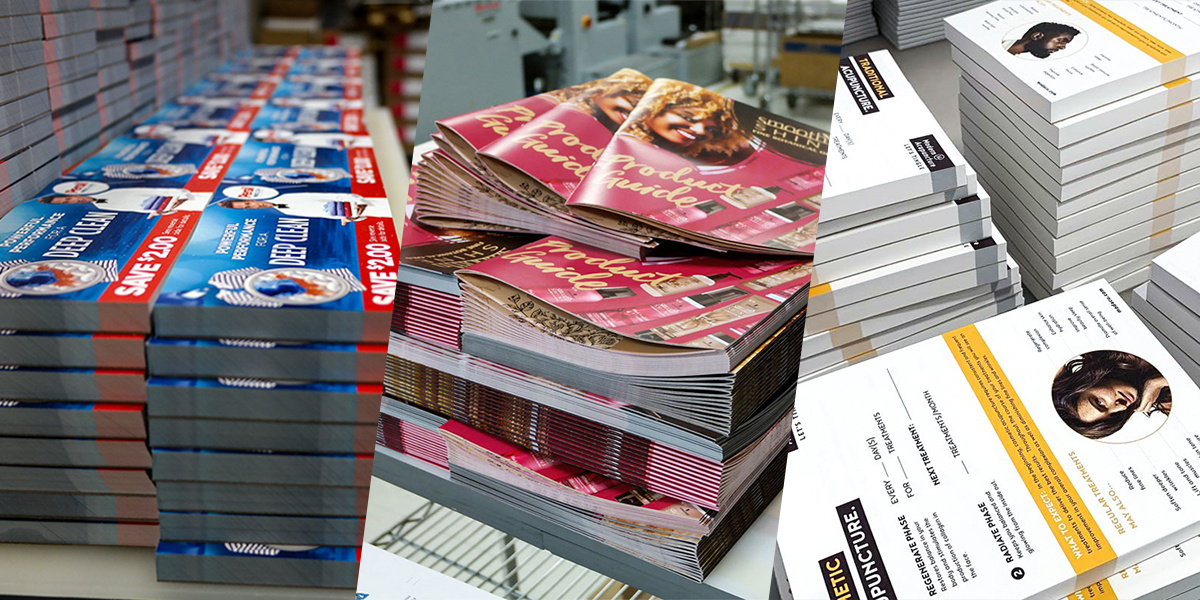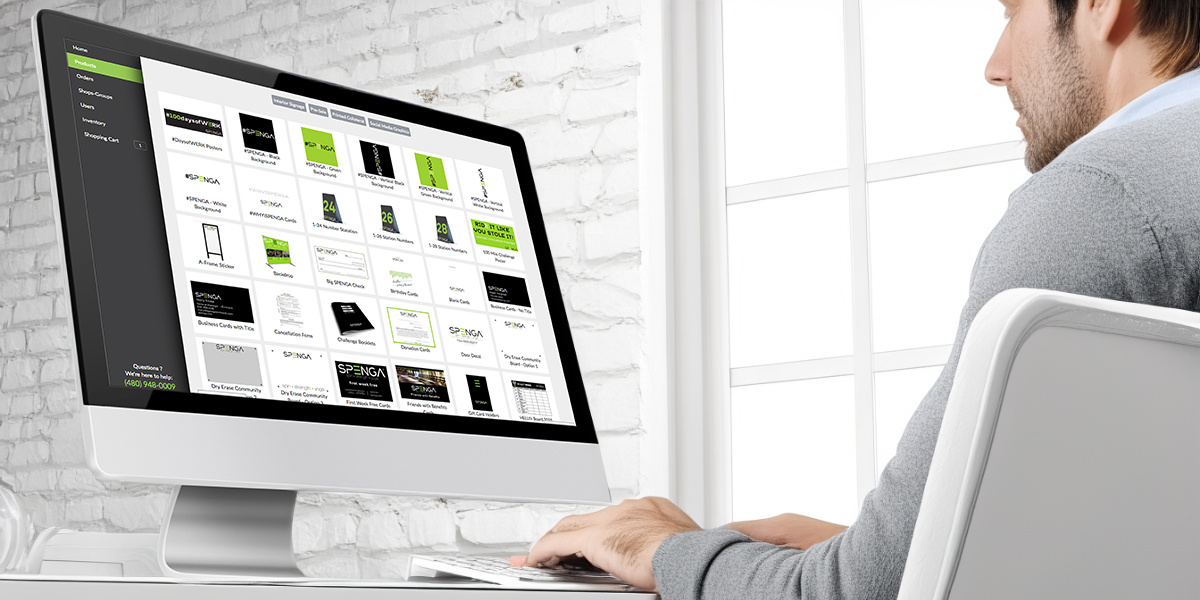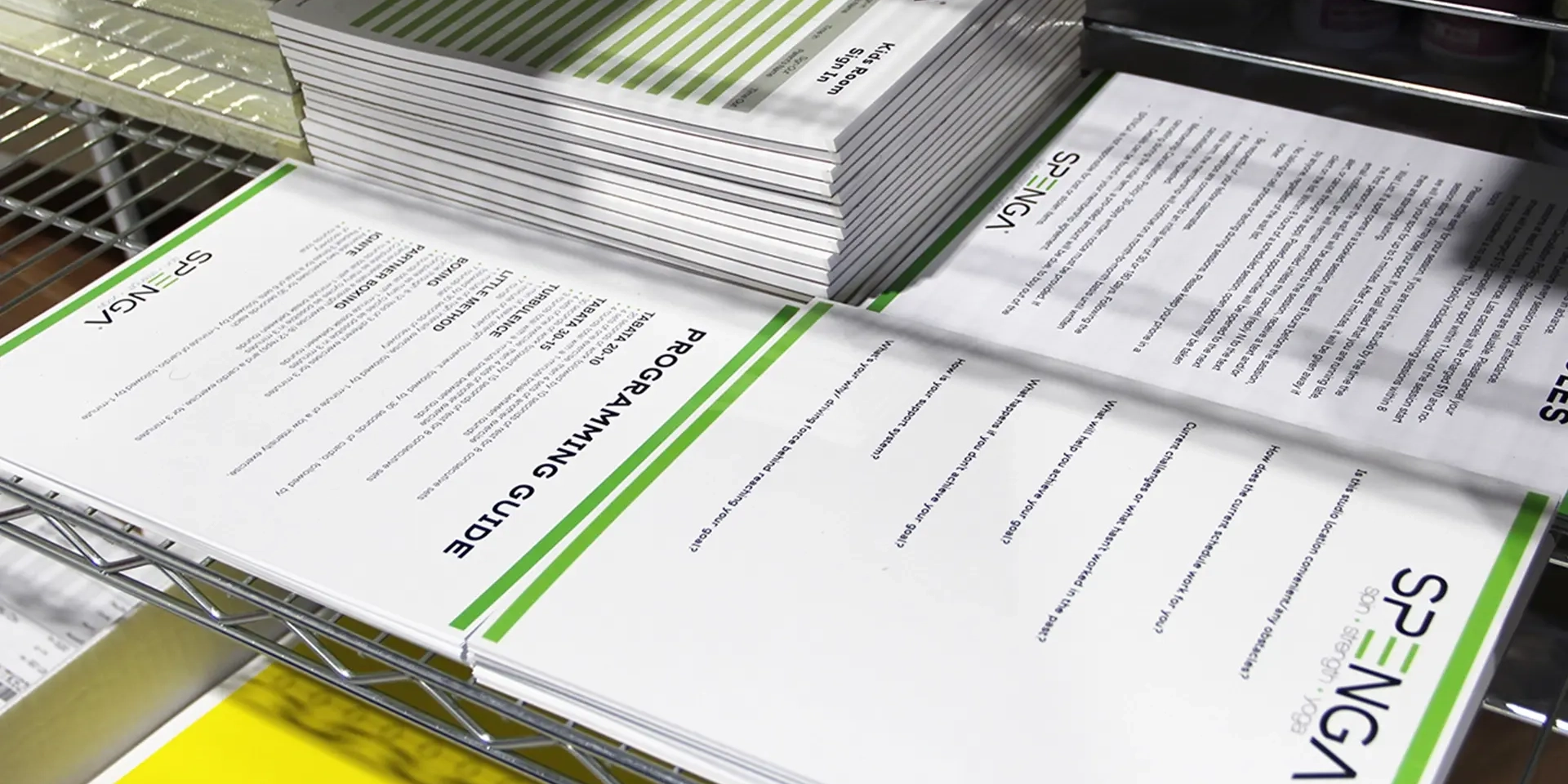How to Produce Print Materials for Diverse Audiences with Web-to-Print

Marketers, we tip our hats to you.
You are the masterminds behind your company's brand guidelines.
You ensure consistent branding while managing a neverending flow of requests for print materials tailored to the needs of various departments, markets, and locales.
You are the miracle workers who are always asked to do more with fewer resources and faster turnaround times–all while maintaining top-notch quality.
While it can sometimes feel like you’re Atlas holding up the world, you have an ally in a digital printing technology known as web-to-print.
Web-to-print makes it fast, easy, and efficient for marketing teams to produce high-quality print materials–from the global arena to niche local markets–while preserving both your brand and bandwidth.
Ready to produce, personalize, manage, and distribute print marketing materials with ease? Here’s what you need to know:
- How Does Web-to-Print Work?
- Web-to-Print Use Case #1: Brand Management Across Multiple Locations
- Web-to-Print Use Case #2: Managing a High Volume of Print Material Requests
- Web-to-Print Use Case #3: Creating Print Marketing Materials for International Markets
How Does Web-to-Print Work?
Web-to-print is a digital printing technology that directly connects businesses to on-demand printing services through a web-based platform. Consider it your business’s online storefront dedicated to print production and promotional products.
Ideal for businesses that need to ensure consistent print marketing materials across different regions, markets, or departments, web-to-print allows marketing teams to streamline the production of print materials, ensure brand consistency, reduce costs, and boost efficiency.
Through the web-to-print platform, marketing teams and approved users (such as employees, regional locations, franchisees, affiliates, distributors, and other partners) have self-service access to produce, customize, order, and distribute the print marketing materials they need.
Here's a detailed look at how the web-to-print process works.
Implementation
First, your printing service provider will build a custom web-to-print portal for your business. This includes incorporating your logo, color scheme, and other brand elements into the portal's interface to ensure a consistent brand experience for your users. A web-to-print platform is similar to an e-commerce storefront, acting as a web-based gateway for employees or partners to securely access, customize, and order the print marketing materials they need.
Template Creation
Once your web-to-print portal is live, it’s time to create templates. First, the corporate or central marketing department designer team creates print-ready templates that are uploaded to the portal. The template design files can include brochures, business cards, flyers, signage and graphics, retail displays, catalogs, and other print marketing collateral. Each template will have a designated area for customizable text, images, and other content. They will also have areas that are locked and cannot be customized, such as logos, colors, layouts, taglines, or required regulatory statements.
Before the templates are live, your printing partner will perform a thorough quality assurance check to ensure the templates are print-ready and all customizable elements function correctly.
User Access and Permissions
One of the key benefits of web-to-print technology is self-service access for users to personalize the print materials they need without intermediaries. This drastically speeds up the entire print production process, reduces bottlenecks, and allows for quicker responses to marketing opportunities or operational needs.
This autonomy of web-to-print technology is made possible thanks to customizable user access and permission settings, including:
- Who can access your company’s web-to-print platform.
- Which marketing material templates an individual user or group of users has access to.
- Monthly print budgets for how much an individual user or group of users can order.
- What elements of each template can be customized, and what elements are locked.
These settings give administrators complete control over the quality and consistency of print materials produced within the platform while offering "controlled customization" for users. To further control the quality and consistency of print materials, administrators can assign approval workflows and define roles within the platform. For example, some users may have the ability to design and order print materials on demand, while other users require approval from a supervisor or a member of the marketing team before the order goes to production.
Ordering and Distribution
Once an order is placed through the web-to-print platform, it's quickly processed by your printing partner. They will manage the entire print marketing fulfillment process from here–including printing, packaging, and shipping.
Since web-to-print platforms are highly customizable, there are a variety of ways businesses and organizations of all sizes benefit from the technology.
Here are three of the most common use cases for leveraging the power of web-to-print.
Web-to-Print Use Case #1: Brand Management Across Multiple Locations
For businesses and organizations with multiple locations, such as the franchise industry, or those with geographically dispersed sales reps, the task of managing print marketing materials presents a significant challenge. They must strike a delicate balance between maintaining a unified brand image, yet every local market they serve demands a touch of personalization.
It's a tightrope walk between global brand consistency and local relevance.
If businesses don't carefully manage this balance, there's a high risk of branding mishaps–especially when regional locations take it upon themselves to produce print marketing materials.
Without the requisite branding and design expertise, these well-meaning efforts often result in off-brand materials, inconsistent quality, fragmented messaging, and variations in fonts, colors, and logo usage.
This is precisely the scenario where web-to-print technology becomes invaluable.
Here’s an example of how web-to-print empowers multi-location businesses to engage local markets without the risk of diluting the brand's core message:
- Template Creation by the Corporate Marketing Department
The corporate marketing department creates design templates for print marketing materials such as brochures, business cards, sales sheets, retail signage, and direct mail marketing postcards.
- Establish Customization Guidelines
Once the template is complete, corporate market teams will then specify which aspects of each template can be customized using variable data technology, such as:
- Name and contact information on business cards.
- Images showcasing local landmarks on a hotel brochure.
- Content on real estate flyers highlighting home prices and insights relevant to a specific neighborhood.
They will also specify which elements of each template are locked and cannot be customized–such as logos, colors, design, taglines, and overarching messaging.
- Upload Templates to the Web-to-Print Platform
The pre-designed, pre-approved templates are uploaded to the company's web-to-print platform. Once uploaded, they are ready for employees, partners, or distributors to browse, customize, and order localized print marketing materials.
Web-to-Print Use Case #2: Managing a High Volume of Print Material Requests
In addition to helping multi-location businesses maintain universal brand consistency, web-to-print technology also reduces the load on marketing and creative teams–a benefit for all types of organizations, not just those operating across multiple locations.
Take the education industry, for example.
From recruiting to alumni relations and sports teams to student clubs, the demand for print marketing collateral from multiple departments can be relentless.
When a central creative team is responsible for supporting the diverse needs of multiple departments within an organization, bandwidth issues can quickly arise. This often results in backlogs and delays, which can directly impact an organization's ability to communicate effectively.
This scenario highlights another area where web-to-print technology can be a lifeline for creative teams that are maxed out on bandwidth. Web-to-print platforms are designed to be extremely user-friendly and empower users of all skill levels to easily produce, customize, and order the professional-quality print materials they need–with minimal help from central marketing and creative teams.
Here’s an example of how web-to-print technology helps universities manage numerous and varied print requests with minimal support with ease:
- Template Creation by Central Creative Team
The in-house creative team develops a range of templates for frequently requested print materials, such as event flyers, recruitment postcards, alumni newsletters, department-specific brochures, and seasonal outdoor signage.
- Establish Customization Guidelines
Universities have various departments, each with its own variation of the main branding, including alumni emblems, business school logos, and sports team branding. Adjusting for the unique branding requirements of various university departments, the central marketing and creative team can tailor customization options to reflect the degree of branding autonomy each department requires. For example:
- General university event flyers have limited customization options to ensure a unified presentation of the university's brand across all departments. Departments can add event-specific details such as the name, date, time, and location of the event, but the overall design—incorporating the university's primary logo, color scheme, and font—remains consistent.
- Business school brochures have more customization options, such as long-form text that allows the department to effectively showcase its unique value propositions and faculty expertise while still aligning with the university's brand.
- Athletic department print marketing materials and signage, particularly for flagship sports like football or basketball, are granted extensive customization options, such as recent photos and vibrant colors and layouts that capture the excitement of college sports.
- Upload Templates and Adjust User Settings
Web-to-print platforms offer a high level of customization, so once the central marketing and creative teams upload the pre-approved and designed templates, they can also fine-tune the user settings for each department. This ensures that only authorized users can modify and order these materials. Additionally, if the central marketing team wants to have a final review or approval before printing, they can set up automated approval routing to proof web-to-print orders before they are sent to production.
Web-to-Print Use Case #3: International Content Creation Issues
Global businesses face complex challenges when creating and distributing print marketing collateral across international markets. Not only do print marketing materials need to cater to different languages, but also cultural nuances that must be navigated carefully to ensure they resonate.
Web-to-print technology is uniquely positioned to solve complex international print marketing challenges by providing a scalable, simple solution that streamlines creative processes and enables marketing teams to produce and distribute content in multiple languages.
Here’s an example of how web-to-print technology is used to produce and manage print marketing materials across international markets:
- Template Creation by the Global Marketing Team
The global marketing department plays a crucial role in establishing a consistent brand presence across international markets. They achieve this by creating a set of core template designs for key marketing materials, including product catalogs, brochures, and corporate stationery. These templates are designed with the global brand identity in mind, incorporating consistent global branding such as logos, color schemes, and foundational messaging.
- Establish Customization Guidelines
Understanding the importance of local relevance, the global marketing team sets guidelines for customization that allow for adaptation to local languages and cultural contexts. This includes:
- Creating digital asset libraries with a curated selection of images and design elements that are culturally appropriate and relevant to each market.
- Specifying areas within each template where text can be translated to local languages, ensuring that the message is accurately conveyed and resonates with the target audience.
- Identifying elements that can be adjusted to reflect local cultural norms and preferences, such as imagery, idioms, and color meanings, while keeping core brand elements intact.
- Upload Templates and Adjust Language and User Settings
Once the core templates are designed and the customization guidelines are established, the global marketing team can then adjust user access rights based on geographic regions or specific countries. For businesses operating in multilingual markets, the platform offers settings that enable users to select from a list of pre-approved languages for their templates. It also supports customized approval workflows that reflect the organizational structure and approval hierarchy of global businesses. For instance, materials produced for a specific market may require approval from both local marketing managers and a central brand compliance team.
Web-to-Print Solutions by Artisan Colour
If you're ready to take your print marketing to the next level with web-to-print, it's time to explore what Artisan Colour can do for you. For over 26 years, we've merged traditional craftsmanship with modern digital capabilities to deliver exceptional print solutions.
We understand the nuances of high-quality digital printing and are committed to delivering innovative solutions that exceed expectations–such as OrderJet, our proprietary web-to-print platform.
Contact our team of experts today to learn how our expertise ensures your print marketing efforts are as effective and efficient as possible.






